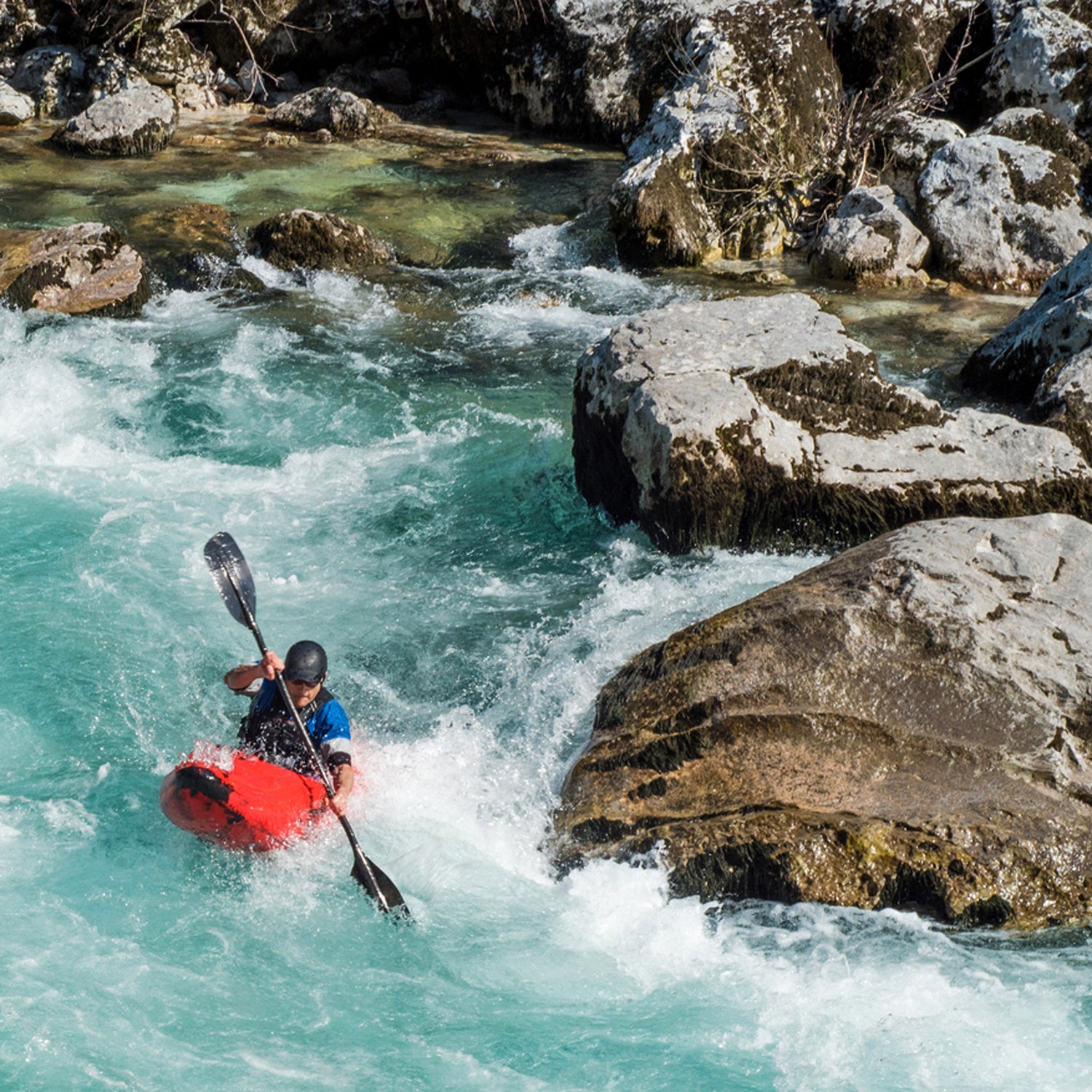There are plenty of ways to die on a whitewater river, most of which are well understood. You can get trapped underwater by the branches of a downed tree, pinned in the sieve between two boulders, or stuck in the swirling flow of a hydraulic. You can bang your head on a rock, fracture your spine, or have a heart attack. But a substantial fraction of whitewater deaths don’t fit into any of those categories. They’re colloquially referred to as “flush drownings,” and no one is entirely sure why they happen.
A ������ Wilderness & Environmental Medicine, by David Farstad and Matthew Luttrell of the UC Health North Medical Center of the Rockies in Loveland, Colorado, digs into the accident records of the American Whitewater Association to look for clues. Their theory: we’re not taking the dangers of sudden immersion in cold water seriously enough.
Last year, Farstad and another colleague, Julie Dunn, published applying the concepts of cold water immersion syndrome to whitewater canoeing, kayaking, and rafting. The syndrome involves four stages: cold shock, which includes an initial gasping inhalation followed by rapid breathing; swimming failure, as blood rushes from your limbs to your core to preserve heat; hypothermia; and, finally, if you’re lucky enough to be rescued, the risk of collapse immediately after being pulled from the water. Only the first two are relevant in whitewater, since you’re unlikely to survive long enough to develop hypothermia.
These first two stages—uncontrolled breathing and loss of swimming ability—are clearly bad news if you’re dumped into a fast-moving river and trying to swim to shore while being periodically submerged by the current. To find out if this is what explains flush drowning, Farstad and Luttrell compared accident records from the Rocky Mountain region, where water is generally cold, and the Southeast region, where it’s warmer.
“Cold” is a relative term: even water temperatures in the mid 70s Fahrenheit can sometimes elicit these responses. But the rivers in the Rockies were clearly colder than the Southeast rivers. According to , the temperatures on July 1, 2018 on seven representative Southeast rivers (e.g. Cumberland, Chattooga, etc.) were between 68 and 82 degrees Fahrenheit. On the same day, seven Rocky Mountain rivers (e.g. Arkansas, Gallatin, etc.) were between 54 and 70 degrees.
Looking at accidents between 1950 and 2018, the researchers analyzed 302 deaths in the Rockies and 66 deaths in the Southeast, the latter occurring only in June, July, or August to ensure the water was warm. The deaths were categorized as entrapment submersion if there was evidence that the victim was pinned underwater for a prolonged period of time. The miscellaneous category included things like head trauma or seizures. And whatever was left was defined as flush drownings.
The pattern was pretty clear. In the warm waters of the Southeast, 74 percent of the deaths were classified as entrapment, and just 15 percent as flush drowning. In contrast, in the Rockies, 61 percent of the deaths were flush drownings and just 31 percent were entrapments. That’s a pretty strong hint that cool water—and bear in mind that temperatures in the 60s are not exactly Arctic—might be an underappreciated risk factor.
Is that the whole story? Probably not, and the authors are careful to suggest that water temperature may be just one factor among several.
I’ve only done one whitewater canoe trip in the western mountains, a . What jumped out at me was how different the river was from the eastern rivers that I’ve paddled closer to home in Ontario and Quebec. Those eastern rivers, running across the Canadian Shield, tend to be pool-and-drop: you have long stretches of relatively placid flatwater punctuated by brief, steep, and sometimes violent rapids or waterfalls. Getting through the rapids is dangerous, but if you make it through (even after capsizing) you’re likely to wind up in a calm pool or eddy where you can get out of the water fairly easily.
In contrast, the Snake River, like many Western rivers, basically flows slightly but noticeably downhill all the time, with relatively fewer waterfalls or big drops. If you dump, a powerful and relentless current will pummel you along indefinitely, bouncing you off rocks or pushing you under periodically, and possibly pinning you against a strainer (a partly submerged downed tree). It’s difficult and exhausting to get to shore, and the longer you’re in the harder it gets.
Could this kind of difference contribute to the frequency of entrapment deaths in the Southeast versus flush drownings in the Rockies? It’s probably part of the story, Farstad acknowledged when I emailed to ask him about it: “I expect some river folks will argue it accounts for much of the difference, and it is very difficult to know either way.”
In one sense, river architecture doesn’t really matter, because you can’t do anything to change one type of river into another. Of course, you can ensure that you’re properly trained in how to self-rescue from fast-flowing water. But that’s easier said than done. Interestingly, there was a suggestive difference in the average ages of entrapment versus flush drownings: 34 versus 51 in the Southeast, and 37 versus 48 in the Rockies. Perhaps being older tilts the odds against successfully extricating yourself from strong, continuous current.
The countermeasures against cold water, on the other hand, are more obvious. In their 2019 paper, Farstad and Dunn emphasized the importance of appropriate thermal protection: a wetsuit or drysuit, perhaps along with an insulating cap or hood under your helmet. American Whitewater’s suggests donning a wetsuit when the water temperature is below 50 degrees Fahrenheit. If Farstad and his colleagues are right about the role of cold water in those Rocky Mountain flush drownings, that 50-degree threshold is way too low.
For more Sweat Science, join me on �����Ի� , sign up for the , and check out my book .


